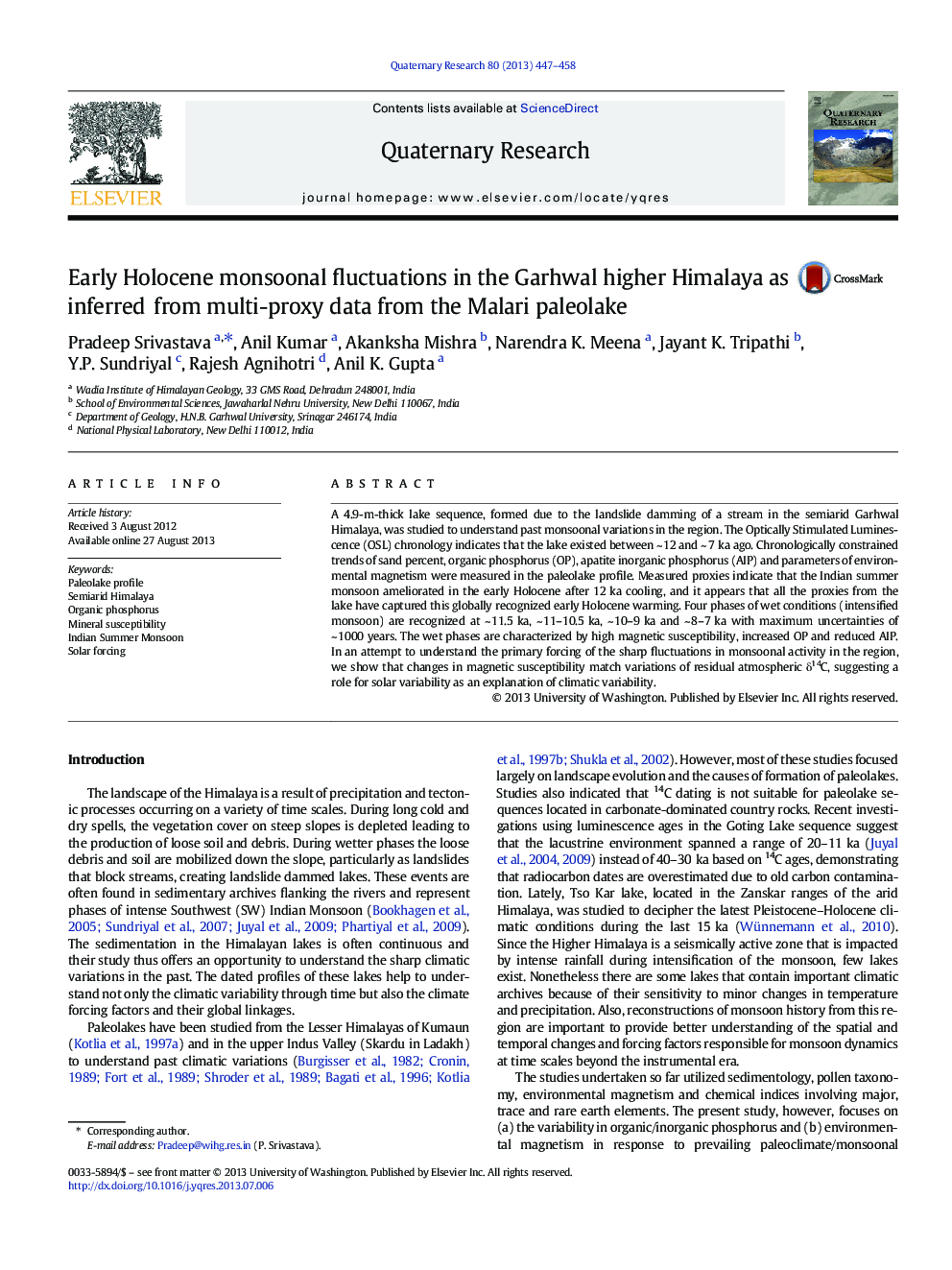| Article ID | Journal | Published Year | Pages | File Type |
|---|---|---|---|---|
| 1045291 | Quaternary Research | 2013 | 12 Pages |
A 4.9-m-thick lake sequence, formed due to the landslide damming of a stream in the semiarid Garhwal Himalaya, was studied to understand past monsoonal variations in the region. The Optically Stimulated Luminescence (OSL) chronology indicates that the lake existed between ~ 12 and ~ 7 ka ago. Chronologically constrained trends of sand percent, organic phosphorus (OP), apatite inorganic phosphorus (AIP) and parameters of environmental magnetism were measured in the paleolake profile. Measured proxies indicate that the Indian summer monsoon ameliorated in the early Holocene after 12 ka cooling, and it appears that all the proxies from the lake have captured this globally recognized early Holocene warming. Four phases of wet conditions (intensified monsoon) are recognized at ~ 11.5 ka, ~ 11–10.5 ka, ~ 10–9 ka and ~ 8–7 ka with maximum uncertainties of ~ 1000 years. The wet phases are characterized by high magnetic susceptibility, increased OP and reduced AIP. In an attempt to understand the primary forcing of the sharp fluctuations in monsoonal activity in the region, we show that changes in magnetic susceptibility match variations of residual atmospheric δ14C, suggesting a role for solar variability as an explanation of climatic variability.
